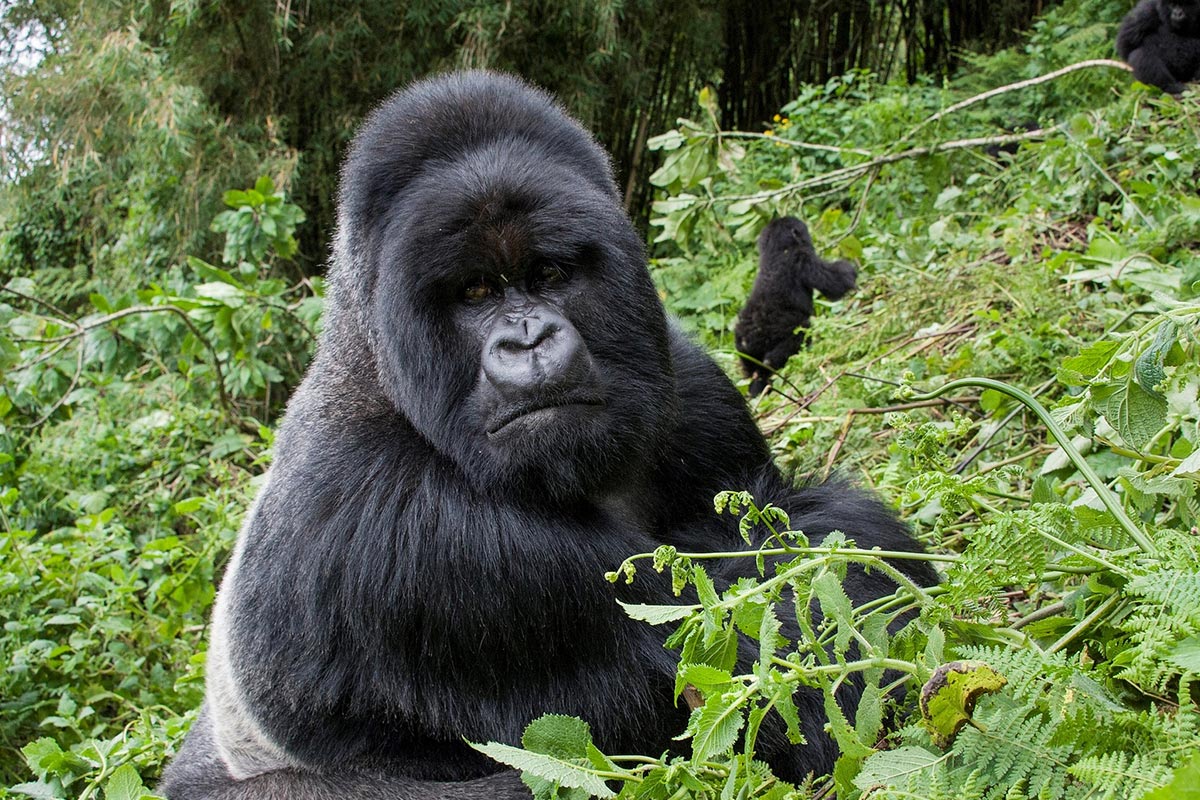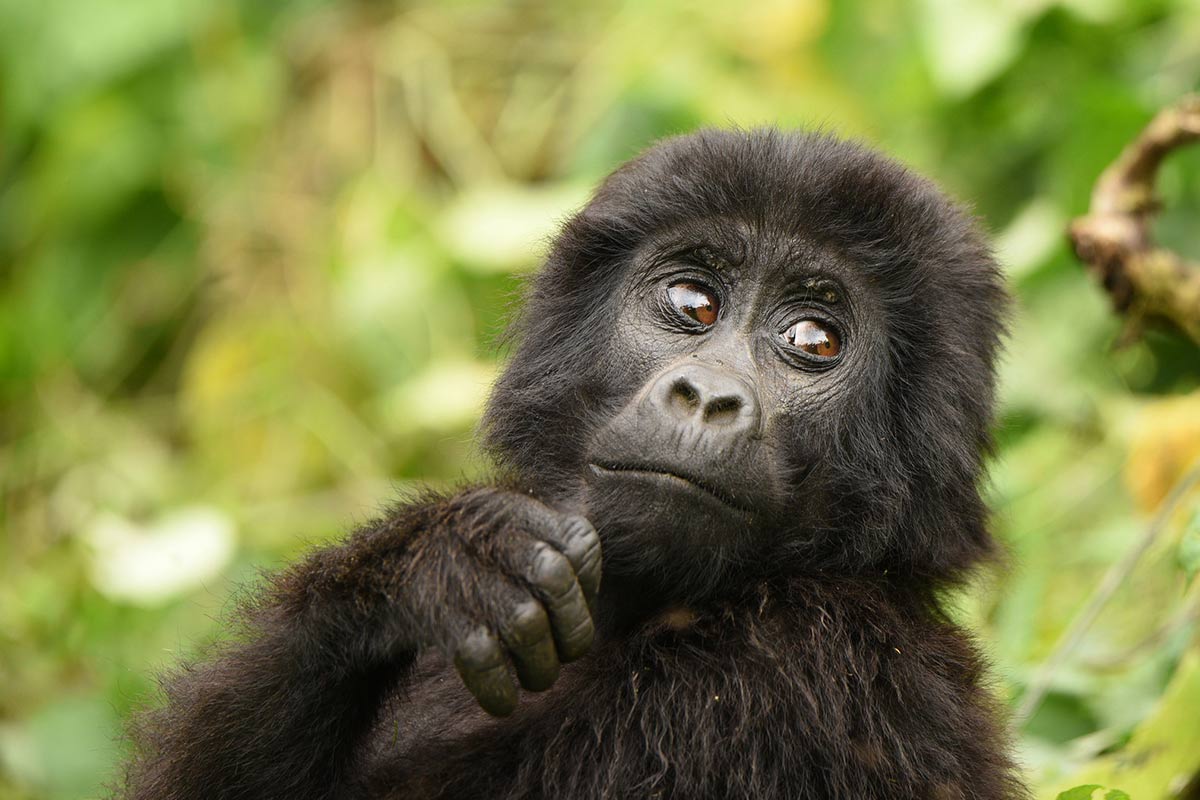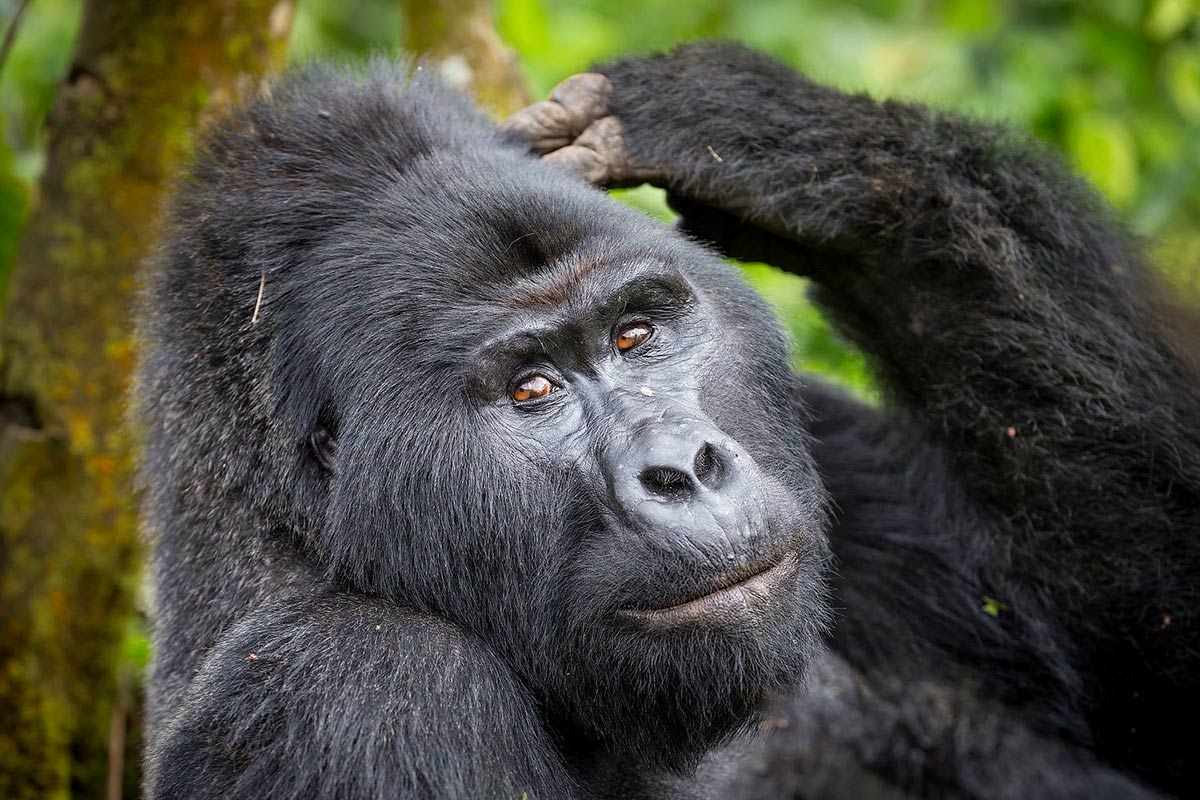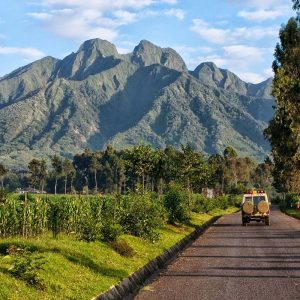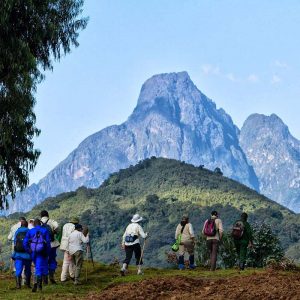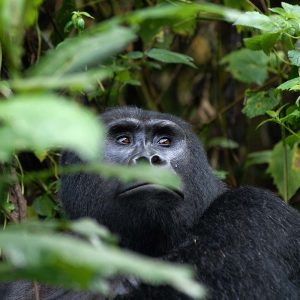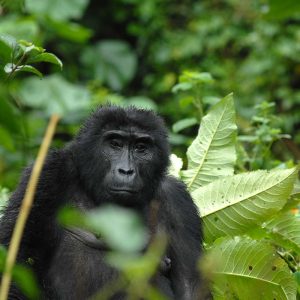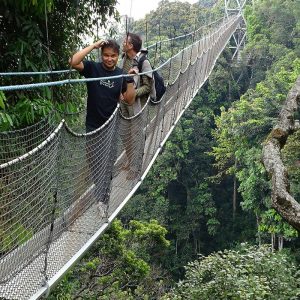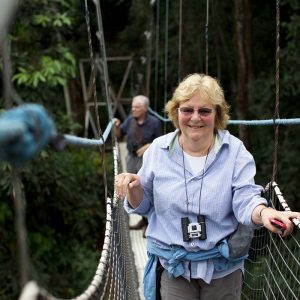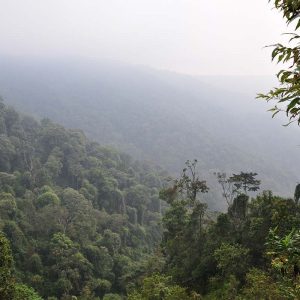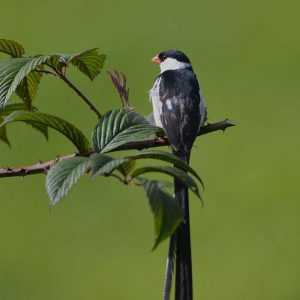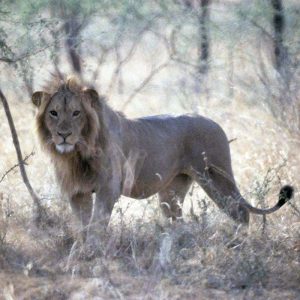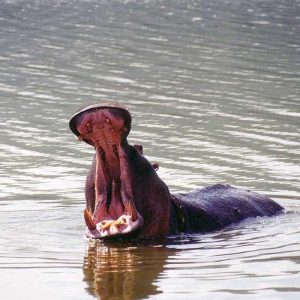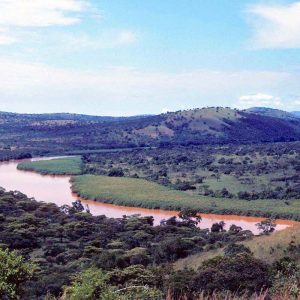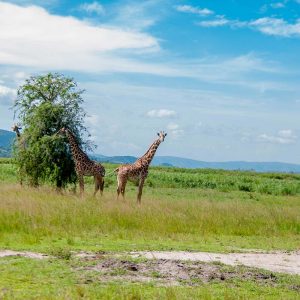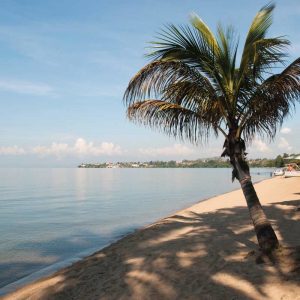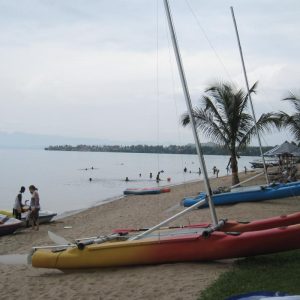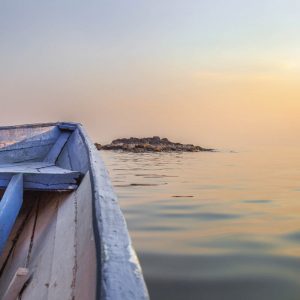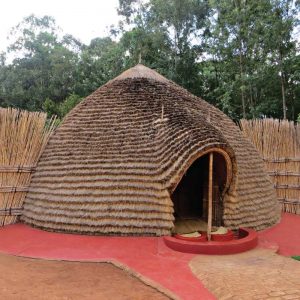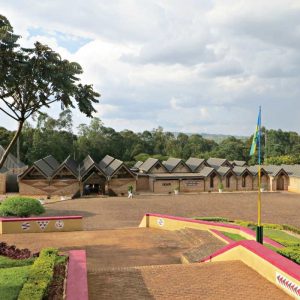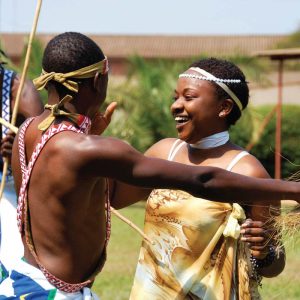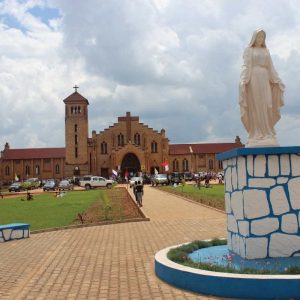RWANDA | “Land of a Thousand Hills”
At 26,338 square kilometers (10,169 sq mi), Rwanda is the world’s 149th-largest country and the fourth smallest on the African mainland after Gambia, Swaziland, and Djibouti. It is comparable in size to Burundi, Haiti and Albania. The entire country is at a high altitude: the lowest point is the Rusizi River at 950 metres (3,117 ft) above sea level. Rwanda is located in Central/Eastern Africa, and is bordered by the Democratic Republic of the Congo to the west, Uganda to the north, Tanzania to the east, and Burundi to the south. It lie’s a few degrees south of the equator and is landlocked. The capital, Kigali, is located near the centre of Rwanda.
RWANDA MORE THAN GORILLAS …
Many travelers have been coming to Rwanda for years to see the country’s stunning gorillas. While Uganda and Congo also provide gorilla tours, the professionalism and ease of doing so in Rwanda make it the top destination. Unfortunately, too many visitors fly down to Rwanda, to see the gorillas, and then fly out—missing out on the country’s many other treasures.
Part of the detach has to do with the lack of attention Rwanda has received for its extraordinary progress during the past two decades and its efforts to open up new tourism destinations. But don’t let traditional tourism be the only highlight—Rwanda now has a booming and safe capital with treats of its own, along with less conventional opportunities to explore the countryside – “Doing” Rwanda in less than a week will rob you of the chance to see a country on the rise against some of the most beautiful and pristine backdrops on the continent. It may be known for its gorillas, but there are lots of other activities that are still off the beaten path that deserve an exploration!
HIGHLIGHTS
The ultimate ‘off the beaten track’ holiday experience, guaranteed to bring out the adventurer in you, it’s time to experience a Rwanda safari.
- Unique Cultural experience
- Luxury Lodges
- Abundance of Mountain Gorillas
- Magnificent scenery
- Untamed beauty
- Adventure
QUICK FACTS
- Arrival airports: Kigali
- Time difference: GMT +2 hours
- Travel time: approx. 17 hours from New York, 9 hours from London
- Visas: Required for Foreign Nationals (East African Visa preferred)
Selected Rwanda Safari Itineraries
Our favorite itineraries, showcasing the best of Uganda
Rwanda Safaris Information
Important Rwanda safaris information you should know on your finger tips
One of the smallest nations in East Africa, Rwanda, became infamous in the 90s during the genocide massacres. But shortly after 1994, Rwanda started with the revival of various sectors of the economy including the tourism industry, and today has been ranked among the top 20 green destinations by the Global Tourist Guide.
The country has gained recognition with the World Economic Forum and the Tourism Competitive Index as the number one sustainable tourism nation, which has seen the the number of visitors entering Rwanda continue to increase year on year.
Rwanda is blessed with amazing natural and heritage tourist attractions that have drawn visitors to the country to experience the real African adventure.
Below is a list of top attractions not to miss while in Rwanda.
Volcanoes National Park | Gorilla Trekking Adventures
Rwanda is one of three nations in the whole world where it’s possible to see gorillas in their natural habitat. Despite the small area of the park with about 125km² of rain forests, it is a home to more than 400 gorillas. Located in Musanze district, it is a 90 minute scenic drive from Kigali International Airport to the gorilla trekking point.
Rwanda Gorilla Trekking is limited to only eight people per group at a cost of USD1,500 per permit. Besides the mountain gorillas, Volcanoes National Park is also home to golden monkey trekking, and gives you the opportunity to come into contact with these rare primates.
Nyungwe Forest National Park | Primates & Chimpanzee trekking
Nyungwe Forest National Park is located in the south-western part of Rwanda and has an unmatched biodiversity of wildlife and birding. The park covers over 1,000km of rain forests, making it Rwanda’s watershed place. The main highlight is the dense canopy walk above the forest that offers breathtaking scenic views.
The park has the biggest population of black and white colobus monkeys found anywhere in the world with over 300 different troops. Other species of primates including the red tailed monkey, blue monkey, and the grey cheeked mangabey.
Chimpanzee trekking is a famous activity in the park where you can get close to man’s closest cousin. Several hiking trails will lead you to a group of habituated chimpanzees and visitors can spend an hour enjoying how chimps feed and groom their young ones with rewarding photographic opportunities.
Kigali | The Capital, Kigali Memorial Center
Kigali is among the top green cities in Africa with some memorable historical attractions. While in Kigali it is possible to visit various memorial sites that commemorate the 1994 genocide, the most famous being the Kigali Genocide Memorial Centre.
Visit the Kigali Genocide Memorial Center in Gisozi to see the hard historical facts about the massive killings that left over one million Tutsi and Hutu people dead within just 100 days.
Akagera National Park | Savanna Game Drives
Akagera National Park was named after the Akagera River that flows through the park and feeds into several beautiful swamp fringed lakes. With a backdrop of rolling hills dotted with African acacia woodlands and savannah grasslands, the park was formed to conserve the unique vegetation and wildlife.
There are three eco regions in the park that are teeming with about 8,000 wild animals including buffalo, elephant, hippo, giraffe, zebra and several antelope species. Bird life is also prolific with over 480 species of birds, including endemic species such as the red faced barbet.
Lake Kivu | Boat cruise & beach holiday
Lake Kivu is a stunning place to visit for your Rwanda safari. Located along the Rwandan border next to the Democratic Republic of Congo, it offers swimming and boat cruising opportunities on the fresh waters of the great East African rift valley. Visitors can relax and enjoy lake side picturesque views.
Butare | Butare National Museum
For a taste of Rwandan culture, delve into its history at Butare’s national museum or at the royal palaces of the former Rwandan monarchs. Visitors to Butare will also get the chance to taste the local cuisine, where several restaurants offer a range of local foodstuffs and international dishes.
Are you looking to visit Rwanda? Check out safari itineraries above or contact us to customise you a Rwanda Safari that fits your plans.
When is the best time to visit Rwanda?
We’re often asked ‘when is the best time to go to Rwanda?’, and the answer is usually complex. It will depend on many things including your interests, where you want to visit and why you’re travelling. One person’s best time is another’s worst!
However, often a concern about the weather underlies the question of ‘the best time to go’.
So here we’ve put together a very rough guide to the climate in Rwanda. Remember that this comes from records and our experience, not from a crystal ball, and that Africa’s weather patterns are becoming increasingly unpredictable – probably due to global warming.
In the heart of Africa, fractionally south of the equator, Rwanda’s relatively high altitude provides it with a remarkably pleasant tropical highland climate, albeit also with plenty of rain. Temperatures vary considerably between locations depending on their altitude, but very little from month to month in the same place. In the capital, Kigali, the average daily temperature is about 21°C.
Rwanda’s long rainy season lasts from about March to May, when the rain is heavy and persistent. Then from June to mid-September is the long dry season; this is generally the best time to visit if you have the choice.
October to November is a shorter rainy season and it’s followed by a short dry season from December to February.
During both of Rwanda’s dry seasons, there is often light cloud cover. This helps to moderate the temperatures, but also occasionally brings light rain showers.
Rwanda Travel Advice
Money & Spending
Rwanda’s unit of currency is the Rwandan franc but we’d recommend bringing US dollars (post-2003 bills only) or euros in cash (traveller’s cheques usually attract poor exchange rates). Do any necessary banking in Kigali as few opportunities exist outside the capital – bureaux de change establishments usually offer the best exchange rates.
Credit cards – notably MasterCard – are accepted in some of the upmarket hotels and restaurants in Kigali but not in many other places.
Tipping
Tipping is not customary in most places in Rwanda, with the exception of some higher-end restaurants in town where 10% of the final bill is standard. If you are doing a gorilla trek, tipping is not compulsory but it will be greatly appreciated – amounts vary depending on the size of your group and the level of assistance required. Your porter (if you choose to take one) should usually receive the highest tip, with a second tip distributed between your guides, trackers and security personnel.
Bear in mind that some guides, porters and trackers are former poachers who now rely on tourists and travellers to make a living. Your generosity helps them see the value of keeping gorillas and chimps alive.
It is worth hiring a porter to help you during the trek: he or she can assist you over tricky parts of the hike, offer support and carry your daypack if you find yourself fatigued on the hike back. Tip your porter well for excellent service.
For in-depth tipping guidelines, enquire with one of our Africa Safari Experts – they’d be happy to share their knowledge with you.
Climate
Average year-round temperatures are about 12°C / 54°F to 27°C / 81°F.
Rainy seasons: March to April and October to mid-December. The easiest gorilla trekking is during the dry seasons from June to September, and late December to February.
Refer to ‘best time to visit Rwanda for climate charts and advice on the best times of year for gorilla trekking.
What to Pack
You’ll need to be suitably equipped for gorilla trekking in Rwanda – preparation is key. When packing for your Rwanda safari, be sure to include long, thick trousers and long-sleeved tops, long socks or gaiters to wear over your trousers as protection against ants, a pair of light gloves to protect against nettles, a hat, a raincoat and of course a pair of sturdy, comfortable hiking boots (break them in before your trip).
It can get cold and damp on the mountains at altitude so pack a change of clothes and a warm fleece in your day pack, along with sunscreen and insect repellent.
Stinging nettles are one of the gorillas’ main food sources so there are bound to be thick patches of nettles when you encounter a gorilla family. We recommend wearing the thickest trousers possible to protect your legs against scratches and gardening or other gloves to protect your hands (you may have to grasp vegetation from time to time to steady yourself on the trek).
Other useful tips:
- Avoid wearing strong fragrances as animals have an acute sense of smell and may retreat from unfamiliar scents.
- Dress in the colours of nature ie browns and greens. Animals are aware of contrast and bright colours, white and strong patterns create the highest contrast against the forest background, once again making game keep their distance.
- Do not wear black or blue as these colours seem to attract tsetse flies and other bugs.
- Ensure your bug spray is environmentally friendly.
- If you can, bring extra stationery, toys or footballs for the village children. Read our useful blog on Easy Ways to ‘Give Back’ on your African Vacation here.
- Consult your doctor or travel clinic about vaccinations and medication to help you cope with the altitude, if necessary. Many of the country’s roads are very ‘twisty’ or windy, so consider bringing anti-motion sickness medication if you get car sick.
Flights & Getting Around
Gregoire Kayibanda International Airport: A short drive from Kigali, Rwanda’s point of entry is served by a direct flight from Brussels otherwise you’ll be flying in from Entebbe, Nairobi, Lusaka or Johannesburg.
It’s about a 2.5-hour drive from Kigali to the gorilla trekking destination of the Volcanoes National Park. Transfers in Rwanda are usually conducted in 4X4 vehicles but you can also take a helicopter flight from Kigali to Nyungwe Forest National Park.
Because Rwanda is a small country, the maximum driving distance between major points of interest is about four to five hours long. In Kigali, one of the most efficient and fun ways of getting around is on the back of a local scooter – it’s a great way to get an authentic taste of the city.
Visa & Passport Requirements
A passport valid for at least six months is required by all visitors to Rwanda. Visas are required by everyone except citizens of the USA, UK, Canada, Germany, Sweden, Hong Kong, Kenya and South Africa.
Multiple-entry tourist visas can be purchased from your nearest Rwandan embassy or consulate. Visas are valid for three months and can usually be extended in Kigali on a month-by-month payment basis.
Gorilla-trekking Permits
A gorilla-trekking permit is essential. It is important to note that children under 15 are not permitted on gorilla treks. Gorilla permits cost USD 1500 in Rwanda.
Where To Stay
Accommodation in Rwanda generally falls into two types: hotels in the capital Kigali, and safari lodges and tented camps situated in Rwanda’s parks and reserves, the most popular of which is of course the Volcanoes National Park. Accommodation here provides the ideal base from which to go gorilla trekking – expect clean and comfortable lodges, good food, amazing forest views and plenty of adventure.
Our selection of top Rwanda accommodation includes luxury ranch-style lodges, affordable bush camps and stylish city hotels – ask one of our African Safari Experts for advice on choosing the right lodge or hotel for you.
LAKE KIVU SERENA HOTEL
Highlights – Serenely situated on the white sandy shores of Lake Kivu, the sixth largest lake in Africa, and surrounded by extensive tropical gardens, the tastefully open-plan Lake Kivu Serena Hotel offers the ideal Rwanda retreat.
LEMIGO HOTEL
Highlights – Conveniently located in Kimihurura-Rugando, Lemigo Hotel just 10 minutes’ drive from Kigali International Airport. Relaxation reigns here amid a serene landscape. Set in a tranquil location within Kigali’s business district, the hotel is distinguished by design innovations and the latest lifestyle trends combined with tailored work experiences.
NYUNGWE FOREST LODGE
Lodge Highlights – Nyungwe Forest Lodge lies on the edge of Rwanda’s Nyungwe Rainforest National Park in the South-West of the country. It boasts an impressive view overlooking the forest canopy from a ridge on one side and a tea-plantation on the other. Nyungwe Forest Lodge effortlessly combines five star services with African hospitality, ensuring a guest experience rich in local culture and history. Boasting 22 spacious villa rooms and 2 luxurious suites, Nyungwe offers guests supreme comfort and style amongst the rolling hills of Rwanda.
SABYINYO SILVERBACK
Lodge Highlights – The lodge is located mere minutes away from the headquarters of the Volcanoes National Park, which is where visitors hike to see the magnificent Mountain Gorilla in its natural environment. The position of the lodge, at the foothills of the mighty Virungas, affords breath-taking views of the majestic chain of 15,000 ft. volcanoes stretching through Rwanda, Uganda and the Democratic Republic of Congo. Kigali International Airport is roughly a 90 minute drive away, making this premier accommodation option ideal for a Rwandan gorilla safari.
Gorilla Tracking in Rwanda
The Virunga Mountains that straddle the borders of Rwanda, Uganda and the Democratic Republic of Congo, are home to around 480 mountain gorillas, more than half of the world’s entire population (the rest live in Bwindi Impenetrable Forest in Uganda). In Volcanoes National Park, the Rwandan part of the Virungas, twelve gorilla groups are now habituated for gorilla safaris, more than anywhere else in the world.
Look into the eyes of a large silverback gorilla and he’ll look back with a thoughtful, intelligent gaze, mindful that you’re another individual. Any apprehensions or nerves you might have had during your trek will melt away the minute you see your gorilla family. Gorilla trekking safaris offer a magical encounter that transcends any other ‘wildlife’ experience we know.
Click for information on Volcanoes National Park, or read on for more about the truly awe-inspiring experience of tracking to see mountain gorillas in their natural environment…
Planning your gorilla trekking safari
When to go gorilla trekking
Gorilla trekking safaris can be done throughout the year. The hiking itself can be more arduous in the rainy seasons from April – May and in November, but at an altitude of 2000m and more, it can of course rain here at any time of the year. For more details, see when to visit Rwanda.
The most popular times for gorilla tracking are during the drier months, between December and February, and from about June to mid-September.
Permits for gorilla trekking
Inevitably, securing permits for trekking gorillas over these popular periods can be difficult at short notice, so you should plan well ahead. We will make all the arrangements for buying your permits.
A maximum of 96 gorilla tracking permits are available each day. As of 6th May 2017, the Rwandan Development Board has increased the costs of the gorilla permits from US$ 750 to US$ 1,500 per person, for a one-hour visit. The new prices aim to strengthen conservation efforts and support the development of local communities. Travellers who are also spending a minimum of three nights in either Nyungwe Forest National Park or Akagera National Park during the months of November to May are entitled to a 30% discount – reducing the costs to US$ 1,050 per person. Amongst other things, the permit pays for a 24-hour guard for each gorilla group (armed teams constantly track each habituated group – like royal bodyguards in the UK!).
What it’s like on a gorilla trekking safari
On the day of your gorilla trekking, you’ll set off very early in the morning to track to the apes from the edge of the forest. Your driver/guide will take you from your lodge (see places to stay in Volcanoes National Park) to the park headquarters in Kinigi village. The guides here speak excellent English and are very good. They will be taking you to a specific group of ‘habituated’ mountain gorillas, which are used to human visitors, and known well by the guides.
You’ll be divided into parties of 8 and, after a briefing on safety and gorilla trekking etiquette, you’ll be driven to the start of the trail to reach your mountain gorilla group. Your guide will then lead you along generally clear paths up into the forest, in radio communication with the trackers that stay with the group so that they can be located. The altitude is over 2,500m, so although the pace is unhurried, the hike is tiring and can be steep in parts, taking from 30 minutes to a few hours. Don’t be surprised if you feel a bit breathless at this altitude – this is perfectly normal.
Most trekkers are a little apprehensive – a large silverback male gorilla can weigh up to 200kg, or three times the weight of the average man, but the apprehension usually vanishes when you see the group. Often the gorillas will be spread around a small area of dense vegetation. They’ll continue with their feeding and interactions, nonchalant about their visitors, though watching you with interest. Occasionally one, often a playful youngster, will approach you with curiosity – sometimes coming so close that you’ll have to move away.
Gorilla tracking etiquette
Mountain gorillas share 98% of our DNA and as such are very susceptible to catching human infections, particularly respiratory ones, but they don’t have our immune system to deal with them – a common cold could eventually prove life-threatening. Various rules for gorilla trekking are therefore in place to help protect these precious primates.
Only one group of tourists can visit the mountain gorillas each day and once you’ve found them, you’ll have just one precious hour in their company. If you have a cold, flu or other contagious infection, you shouldn’t go gorilla trekking.
You should keep a distance of 7m from the gorillas, although of course the gorillas themselves are unaware of this and will often get very close, in which case you should try to move away.
When you’re with your group, you should try not to make sudden movements and to keep your voices low so that the group remains relaxed. Although these mountain gorillas are now used to seeing people, do bear in mind that they are still wild animals and can sometimes react unexpectedly, so always heed your guide’s and trackers’ instructions.
You won’t be allowed to eat or drink when you’re with the gorillas.
What kit should you take for a gorilla trekking safari?
Paths on gorilla treks can be slippery, muddy and steep so sturdy walking boots are essential. Some people take thick gardening gloves because of the brambles and nettles en route and you should wear long trousers rather than shorts. A waterproof jacket may come in handy and take some water and a snack in case it’s a long trek. You might also find a walking stick or pole helpful.
For a small fee, porters are available at the trailheads to carry your backpacks and offer a hand during tricky parts of the hike. Even if you don’t really need them, hiring a porter is a helpful way to contribute directly to the local economy and chatting to them en route can enhance your experience both of local life and of your gorilla trek.
Photography on a gorilla trekking safari
If you’re a keen photographer, taking your own pictures of mountain gorillas is one of the most magical photo sessions you’ll ever experience. Do bear in mind that the light can be poor in the rainforest and that use of flash is not permitted. You might also need to protect your camera against heavy rain.
CONTACT OUR SPECIALISTS
Most Requested Uganda Safari Packages

